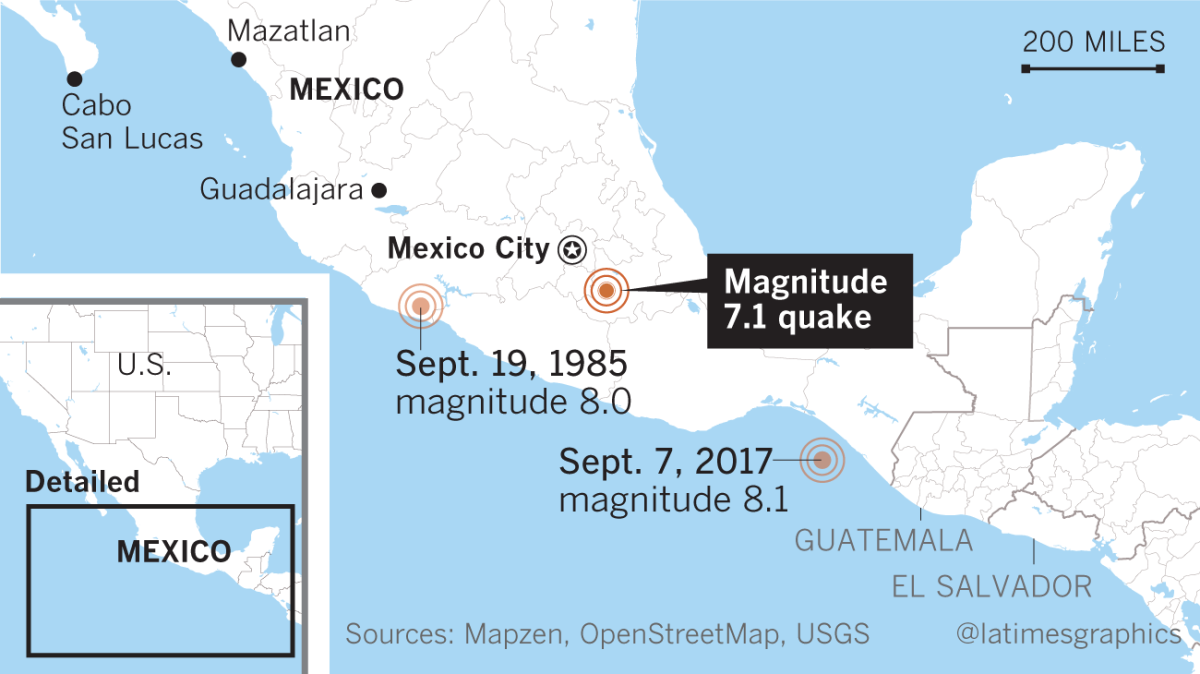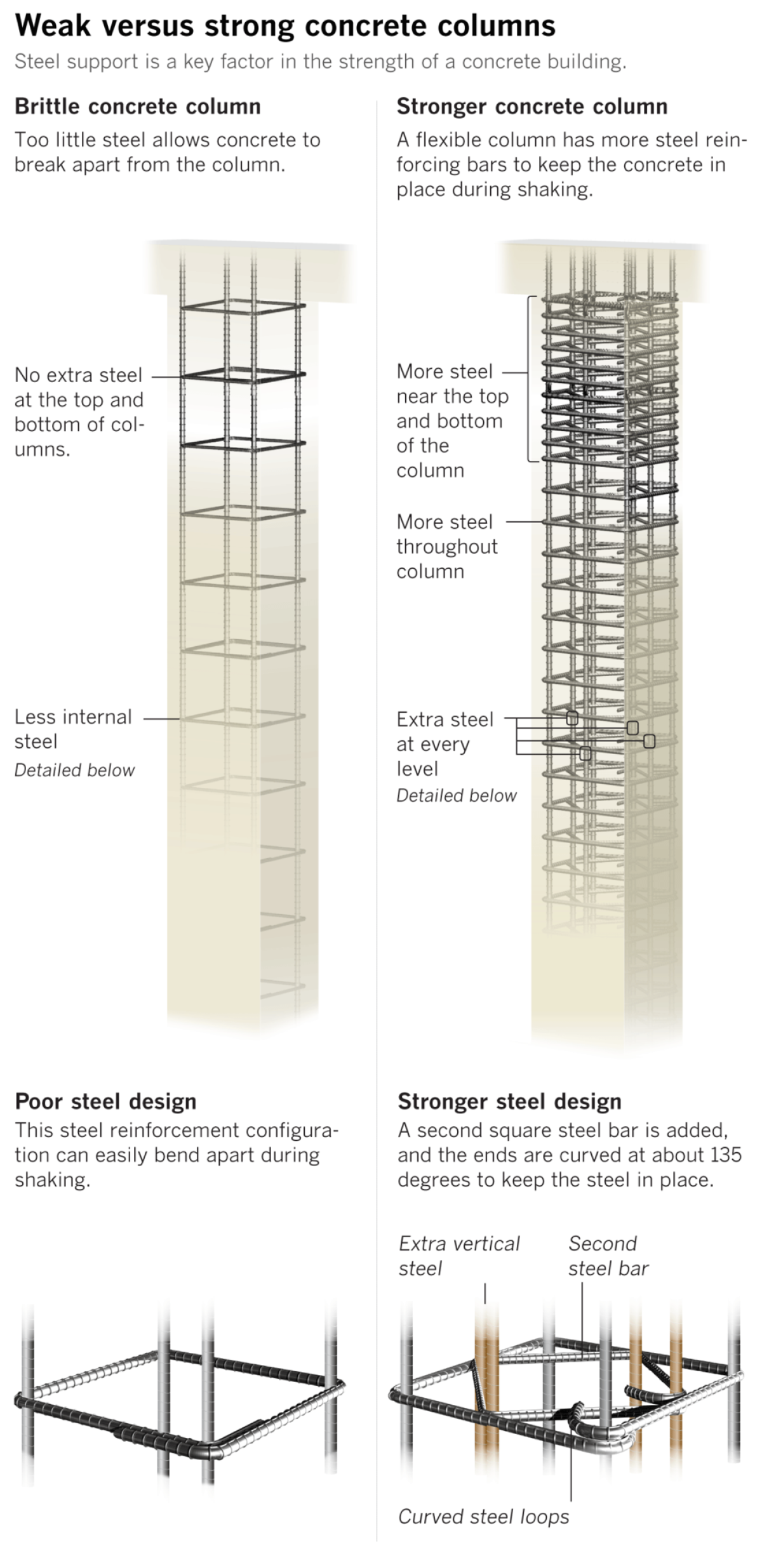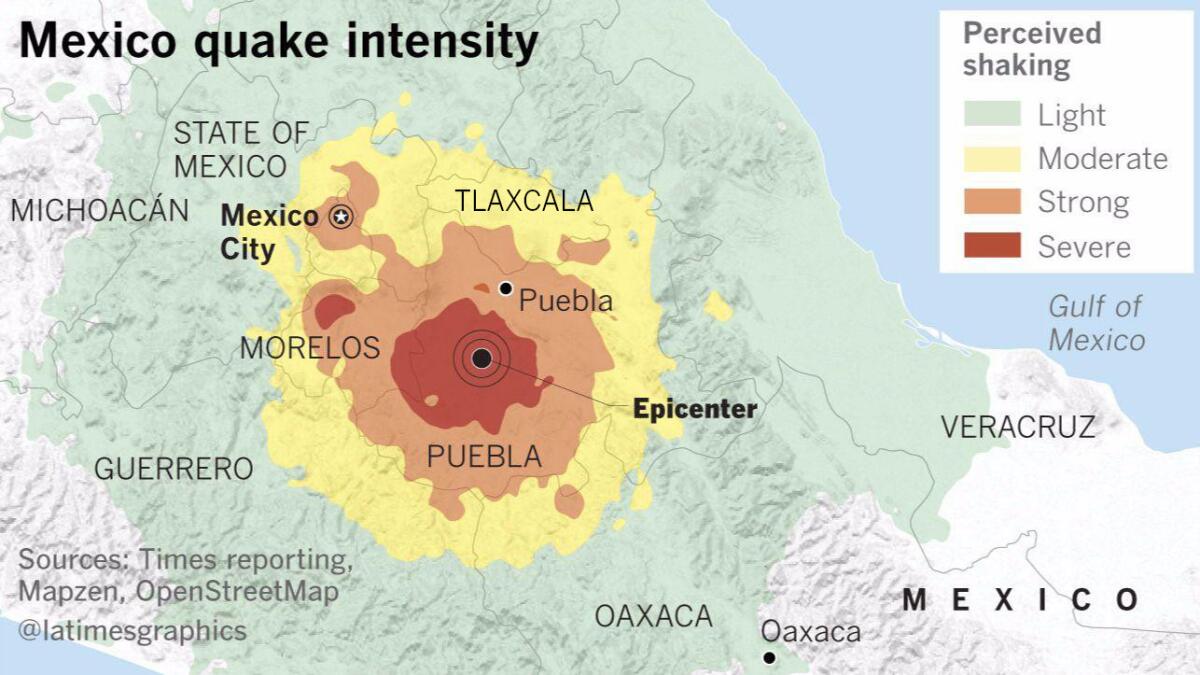Mexico City has never cataloged its buildings to know how many are at serious risk of collapse in an earthquake

Certain types of buildings are especially vulnerable to collapse during earthquakes — and earthquake-prone Mexico City is filled with them.
Those with so-called brittle concrete frames are well-known hazards. Buildings with a weak first story, often supported by narrow columns to accommodate parking, are also known to be dangerous.
How many such buildings exist in this 573-square mile metropolis, home to nearly 9 million people, is hard to know. The government has never cataloged its real estate to identify risky structures.
Now, in the wake of the magnitude 7.1 earthquake that killed more than 360 people in September, some experts are urging city officials to do just that — so tenants can be warned and building owners can be ordered to retrofit them with steel braces or new walls.
“We have to move very fast,” while the issue is fresh in people’s minds, said Sergio Alcocer, an earthquake expert at the Institute of Engineering at the National Autonomous University of Mexico.
Such an undertaking is costly and has long been viewed as politically difficult. Many cities have resisted similar calls.
But political sentiment can shift. In 2015, Los Angeles became the biggest city in California to pass a law to identify vulnerable concrete buildings and apartments with weak ground stories and mandate retrofitting. Once building owners are notified, they have seven years to fix weak ground stories and 25 years to complete modifications to stabilize brittle concrete frames.

In an interview, Los Angeles Mayor
“Waiting causes lives to be lost,” he said.
Los Angeles anticipated organized opposition by building owners and overcame it by conducting two years of public education efforts on the risks of inaction.
But Mexico City hasn’t had that level of discourse, and there is an expectation that owners would also oppose mandatory retrofits. Alcocer, who is a member of a mayoral commission established to make recommendations for the city’s long-term seismic resiliency efforts, said he imagined offering owners economic incentives such as waiving property taxes or easing the financial burden with city loans or bonds.
In California, retrofits of smaller apartment buildings typically cost tens of thousands of dollars, while strengthening taller buildings can exceed $1 million.
Alcocer estimated that the cost of retrofits in many cases would be 15% to 20% of the cost of replacing a building.
A total of 42 buildings collapsed and as many as 1,000 more were damaged in the Sept. 19 earthquake that was centered about 80 miles southeast of Mexico City.
Many of the buildings that fell were made of brittle concrete, including a seven-story office building on Avenida Alvaro Obregon in Mexico City, where 49 people died — the largest death toll at any one site.

That building was a “flat slab” structure, a design that lacks horizontal beams that are far more durable in an earthquake. Flat slab construction was very popular in Mexico City in the 1960s and ’70s, Alcocer said.
“This system is not a proper system for a high seismic area,” he said.
Retrofitted buildings survived just fine in the earthquake.
“We have the prescription,” said Saif Hussain, a Los Angeles-based structural engineer who visited Mexico City in October with the Applied Technology Council, which develops nationally recognized retrofit standards. “It’s just a matter of people being aware of it, and implementing it — and the political will.”
Alcocer said he recently met with Mexico City’s mayor, Miguel Angel Mancera, and suggested the city make a plan to review and eventually strengthen certain classes of buildings known to be hazardous, as well as evaluate all schools, hospitals and markets. “He’s very open to it,” Alcocer said.
The mayor’s office did not respond to interview requests.
Mexico City residents said in interviews that they would welcome new safety measures. But many doubted that the government had the political will to even conduct a census of buildings, let alone order costly improvements.
“I think the government should tell us if the area is safe, if our building could be in danger if they do not make the right revisions,” said Claudia Centeno, a 40-year-old nurse who was told that the damage to her apartment was only cosmetic. “I’m going to leave this building as soon as my rental agreement is up, but the next people who want to live here may be at risk and might not know if the government says nothing."
After the quake, city inspectors fanned out to assess the damage. But they were not checking for vulnerability to the next earthquake, according to Elizabeth Cochran, U.S. Geological Survey seismologist who recently visited Mexico City with the Earthquake Engineering Research Institute as part of a mission to learn from the September earthquake.
Rosario Avendaño, a 22-year-old marketing student whose apartment building in the Del Valle neighborhood is still standing, albeit with cracks in some walls, said she wants the government to conduct more thorough assessments.
“The government is only covering the sun with a finger,” she said. “They are going to remodel, they are going to paint, they are going to change broken glass so that everything looks nice again, but they are not doing in-depth studies of why so many buildings were damaged in the city.
“The government must tell us the truth about whether or not our houses are safe.”

Times staff writer Lin reported from Los Angeles. Sanchez is a member of The Times’ Mexico City bureau. Staff writer Kate Linthicum in Mexico City contributed to this report.
ALSO
When a big earthquake hits, your first instinct can mean life or death
Why some buildings crumbled and others survived the Mexico City quake: A sober lesson for California
Could your building collapse in a major earthquake? Look up your address on these databases
Sign up for Essential California
The most important California stories and recommendations in your inbox every morning.
You may occasionally receive promotional content from the Los Angeles Times.








